Talking to Lauren Oliver and Lexa Hillyer, “Story Architects” for Young Adult Literature
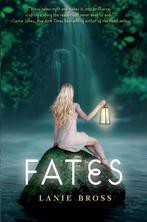
Lauren Oliver and Lexa Hillyer are the co-founders of Paper Lantern Lit, a boutique YA book studio they call a “literary incubator.”
Let me see if I’ve got the concept of literary incubation right? You guys are the “architects,” so you come up with YA concepts you think will do well, then match the concepts with writers; the writers finish a manuscript, you sell the manuscript to a publishing house, the writers get a cut. This is a similar model to book packagers like Alloy (Gossip Girl, etc): what are the differences?
LH: We really admire Alloy’s model and yes, there are definitely some similarities in what we do (and who we do it for). We are much smaller, of course, and we do a limited amount of projects per year. I think really the difference comes down to sensibility. A huge amount of our time and effort goes toward cultivating the writers we work with — interacting with them on a weekly basis, giving in-depth notes not just about the project but about their overall prose needs and experiences in the industry. We seek writers whose voices we believe in launching, and we match them with the kinds of stories that reflect their strengths and the things they care about.
Let’s say I myself am a fledgling writer looking to get book experience and pick up cash on the side. In this not-very-fake scenario, I’m desperate to apply to PLL. What sort of experience do I need to have? What would I submit to you? What are you looking for?
LO: You don’t need to have any experience in particular, except for a love of and passion for writing, and a desire to work very hard at the craft. We have standard submission policies and a super easy process; it’s all easily summed up on our website. What we look for, above all, is VOICE. I know, I know. That’s super hard to define. But in practical terms what it means is that we’re looking for specificity, for risks, for ambition. We’d rather have a less experienced writer whose prose is unique than a “perfect” writer whose prose is generic.
Let’s say you like whatever I submitted and you’re interested in working with me. How involved of a concept would you send back, on the spectrum from “Nancy Drew, but with mermaids” to a fully outlined plot with characters fixed down to their hair color?
LH: Ha — you’re adorable! And the answer is easy: the latter. We do not like to sign on a writer until we feel confident that the narrative “has legs.” We’re story architects, so we need to make sure the foundation is there first. However, it continues to be a work in progress once we have a writer. Sometimes the hair color is just there because it’s very hard to plot a book if you can’t picture the characters and keep them straight in your head, but that doesn’t mean it can’t be changed.
Unless, of course, the whole crux of the Nancy Drew mystery is based on finding a long strand of distinctively red mermaid hair as evidence.
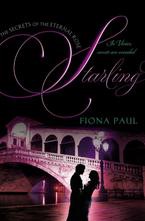
I was reading in other interviews that you guys stay very involved with your writers, check in with them weekly, listen to their input, hold workshops, and even pair them with historical experts if necessary. That last bit sounds really cool; can you give me an example?
LH: We hired a consultant for Fiona Paul’s Secrets of the Eternal Rose trilogy (Venom, Belladonna, and the forthcoming Starling, which is action-packed, sexy, completely shocking, gorgeously written, and Cassandra finally decides which boy is for her). The book is set in late Renaissance Venice, and our very experienced (and well-published) consultant read and vetted all of the plot outlines, answered all of our crazy questions (Did people have pets? How familiar were they with Shakespeare? How much did they know about SEX?), and carefully read multiple drafts of the manuscripts, providing notes and suggestions. She also developed a 60 page historical “bible” for us, with pictures, to help inspire and guide the author.
Of course, Fiona did tons of her own research too, but it definitely helped to have a close eye on all the little details. Understandably, the author was worried about accidentally using an anachronistic metaphor, like “When he touched her, she felt a bolt of electricity through her whole body” — because they didn’t have electricity.
So, let’s say that you guys have accepted me as a match for ______ concept. How long do I have to write the manuscript? At what point do I get paid? What happens if I really, really think that my main character should actually be in love with X, not Y?
LO: We work with our writers to develop a proposal — not a full manuscript, but a small percentage of it — and get it into perfect shape before submitting to publishers. That might take two months or 7; the point is that we not only finesse the project, but the writer him/herself. We give people reading lists and detailed editorial letters, sometimes every week. Sometimes we give separate assignments, unrelated to the project, that we think will help deepen a writer’s intuition or empathic capabilities.
We also deliberately choose people with strong opinions and a strong connection to the material. The outline is always fluid. We want the writer to take it and make it his/her own. If we really disagree, we have lengthy discussions about it until we come to a solution. But nothing is ever set in stone, and our writers often make different creative choices once they get into the material. We want that.
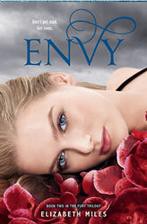
What percentage of your writers are full-time versus part time? Is this more of a learning-to-write-YA-novels thing or a stable primary gig?
LO: It really, really depends. Some of our writers write full time. Some of them are editors, jewelry-makers, or actors; some of them never want to do anything else but write YA. Some of them use writing as only one of their creative outlets.
You are both experienced and accomplished writers, and you’ve paid your dues in the publishing industry. What did you start to see was missing in the publishing world that made you want to start PLL? Do you think the YA development model will shift to this boutique, not-quite-agency/not-quite-packager model?
LO: We initially started the company for very personal reasons. Both of us felt creatively under-stimulated, and we wanted to have the ability to work on a variety of projects in different genres and for different audiences, to take chances and risks with new formats, to have more flexibility about the kind of projects we could acquire and spend time on. Only later did we begin to perceive that we were, in fact, performing a kind of vital service” — there really aren’t any programs that help, say, the MFA world or the pool of potential authors really grow their narrative talents and ability to produce commercially viable work. We wanted to step in and fill that gap. And in the past few years, we’ve definitely noticed an increase in companies like ours. I think people increasingly just have a more fluid sense, potentially, of how stories get made and told, and of how editors and publishers can relate to the material they sell.
I saw that you guys have a 100% sell rate, which is awesome. How many books have you sold so far?
LH: We hit 30 just at the end of 2013 — holla! The awesome thing is that many of these are second and third (in one case, fourth) books for our writers. It’s a testament to publishers’ faith in them and the writers’ faith in us. While our process is definitely not for everyone, it makes us happy to have such clear evidence of how happy our writers are.
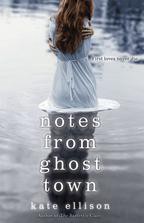
How many people do you have working at Paper Lantern Lit? How does the staffing for a company like this work?
LH: Currently there are 8 of us, including myself and Lauren. We have three editors (one who doubles as a marketing manager!), plus a marketing assistant, an incredibly talented editorial intern, and a student fellow from CUNY’s MFA program in Creative Writing (we cover her semester’s tuition plus stipend in exchange for her having a three month internship with us.) We also have a couple of remote readers — usually college students. We’re all women — though we’re not exclusive — we had a brilliant marketing intern named Adam Silvera representing at PLL last summer!
With a small start-up, you have a lot of flexibility, allowing employees to shape their own careers. We do our best to identify their strengths and passions and move them toward positions that really fulfill those while still requiring growth. Some of our employees have special interests — increasing diversity among our writers, working directly with teens, connecting with multi-media platforms — they have the freedom and flexibility to start committees and programs to make their dreams happen. This is how the Teen Trendsetters program emerged, for instance.
I read another interview with you guys where you were stating that the current writer-development outposts (basically, the MFA program) will put too much emphasis on craft and not enough on market viability. As someone in an MFA program currently, I agree with this to an extent, but I also think it’s great to be able to at least take your shot at being one of the handful of people that can make literary fiction somewhat of a livelihood — as long as you, hopefully, understand that the odds are (to put it nicely) not good.
Do you guys as writers (and MFA veterans) ever feel conflicted over the craft vs. commercial viability give-and-take? Was part of the impetus to start PLL the realization that, okay, most literary fiction or poetry just does not sell?
LH: You know your stuff! That cynicism usually takes years to cultivate! Haha. Um, the answer is yes and no. I think the distinction for us is not so much between craft vs. commercial viability, since we put an extremely high premium on craft, too. (But I think what you’re saying about academia is totally true.) Instead, I would say there is a discrepancy between types of craft that are taught and encouraged at MFA programs vs types of craft required and valued within the publishing industry. Often the items that fall under the rubric of “craft” at a school include character development and prose style (use of metaphor, syntax, voice, tone, etc). And a key item will sometimes be left out: the craft of creating a strong narrative, or in other words, the plot. And plot and commercial viability are not quite the same thing, although strong story-telling is part of what makes books appealing to publishers and memorable to readers. So, in our work at PLL, we consider the commercial viability of the concept, the effectiveness of the plot structure to create good story, and the quality of the prose and depth of the characters.
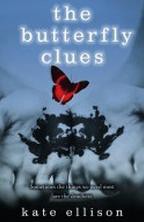
I’m with you on that, the neglect of overarching narrative propulsion as a craft necessity, and blame the short story as the de facto workshop format.
So, you guys have a teen focus group: can you talk about that a bit? I worked briefly for Best American Nonrequired Reading and was consistently amazed at the confidence, intelligence and insight of our teenage selection committee.
LH: Our Teen Trendsetters give us their input not just on what we’re already doing but on what they love and what they’re interested, and it definitely helps shape our decisions about where we want to steer our company and our books. They give an outpouring of love for our books too: creating inspiration boards, soundtracks, collages, dream casts, and so on — it’s so fun to see, and it’s a way for our authors to have an instant audience and an early sounding board. And they don’t hesitate to tell us when they hate something, too!
Yes, that is the best thing about teens! So, there’s a lot of talk about YA being dynamic, a place for risk-taking, and the model that you’re operating seems very innovation-friendly. But then of course YA is still a pretty homogenous world: isn’t it like 90% of YA covers feature a white character, and around the same percentage of top-selling authors are white? All of the faces on your writer page are white, I noticed, and I was just wondering how you guys personally see the issue of diversity in YA. Where and when does that issue come up in the process of thinking of concepts, working with writers?
LH: We have actually hired our first writer of color — HOORAY!!! She is amazingly talented and we can’t wait to introduce her to the world in 2014. We’ve also come very close to hiring several other non-white writers and have made a concerted effort to encourage submissions from a more diverse pool. Two of our editors attended a conference for Latina/Latino writers last year and are continuing to look for more ways to reach more writers (and readers) from different backgrounds. We absolutely read our submissions “blind,” but once we’re interested in a writer, we do ask a lot about his or her background so that we can continue to shape the projects to reflect their experience and perspective. We’re interested in telling a variety of stories and representing a diverse cast of characters; America doesn’t look like a single story or person.
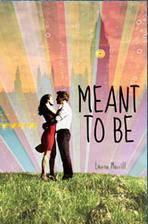
Any advice for people who are interested in getting into the YA world, on the publishing or writing or any end? Anything unexpected that you guys have learned after taking things into your own hands?
LO: Oof. Where to start? Let’s see. Have patience. Find the story you want to tell. Learn to tolerate disappointment, grow from mistakes, and celebrate even the smallest successes. In the end, the skills you need to “make it” as a writer or in the YA world aren’t so different from the skills that are beneficial in almost any industry. And pretty much everything we’ve learned has been unexpected, so I’m going to have to get back to you on that one.
What’s the most fun part of the job?
LO: Our staff: a collection of brilliant, diverse, strange, and brilliantly strange women. We have so much fun together. And getting to work in our pajamas, of course! (Especially during this polar vortex.)
Lauren Oliver is the author of Before I Fall and the bestselling Delirium trilogy, which has been translated into more than 30 languages. Lexa Hillyer is an award-winning poet and former editor at HarperCollins Children’s Books as well as Razorbill, a Penguin imprint. More about Paper Lantern Lit at their website.